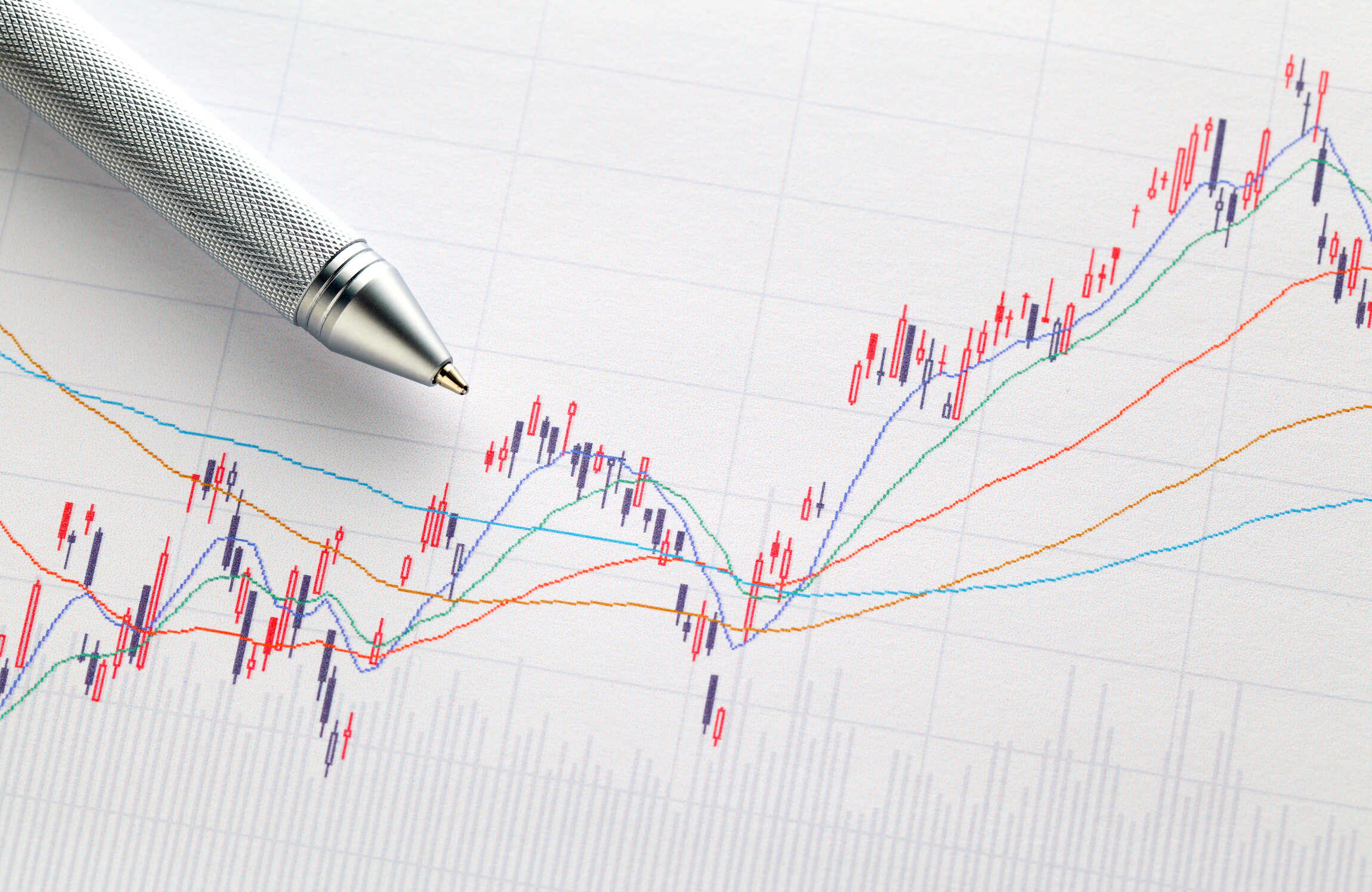
Fundamental Analysis vs Technical Analysis: The Best Approach for Your Investments
Struggling to choose between fundamental analysis vs technical analysis for your investments? This comprehensive guide breaks down the key differences, strengths, and weaknesses of each method. By the end, you’ll understand which strategy aligns best with your investment goals.
Table of Contents
Key Takeaways
- Fundamental analysis assesses a company’s intrinsic value through financial health and key metrics like EPS and P/E ratio, making it suitable for long-term investors.
- Technical analysis focuses on price patterns and historical data to forecast future price movements, primarily benefiting short-term traders.
- Combining both fundamental and technical analyses can enhance investment strategies by leveraging the strengths of each method and improving decision-making.
Understanding Fundamental Analysis

Fundamental analysis is like the Sherlock Holmes of the investing world. It seeks to uncover the intrinsic value of a company’s stock by delving into its financial and management conditions. This method is built on the premise that a company’s true worth is reflected in its financial health and market conditions, not just its current stock price. Fundamental analysis evaluates a company’s fundamentals, such as assets, liabilities, management, and overall economic condition, to determine its true value.
Examining detailed financial and economic factors data allows investors to discern whether a security is undervalued or overvalued. This approach is typically favored by long-term investors who aim to identify companies with strong growth potential and stable financial performance.
Key Metrics in Fundamental Analysis
Key metrics in fundamental analysis are the tools that help investors measure a company’s performance and value. One such metric is Earnings Per Share (EPS), which indicates a company’s profitability by dividing its net income by the number of outstanding shares.
Another essential metric is the Price-to-Earnings (P/E) ratio, which compares a company’s current share price to its earnings per share to gauge its valuation. Book Value represents the net asset value of a company, calculated by subtracting total liabilities from total assets. This metric indicates what shareholders might receive if the company were liquidated.
Intrinsic value, another critical concept, reflects a company’s true worth based on its financial performance and economic conditions.
Tools and Techniques
Fundamental analysis relies heavily on scrutinizing a company’s financial statements, such as income statements, balance sheets, and cash flow statements, to assess its company’s financial health. These documents provide a wealth of information about a company’s performance, helping analysts make informed evaluations.
Analysts also use various financial ratios derived from these statements to assess a company’s profitability, liquidity, and overall financial stability. Combining these tools and techniques helps fundamental analysts build a comprehensive picture of a company’s financial health and potential for future growth.
Exploring Technical Analysis

While fundamental analysis seeks to uncover the intrinsic value of a company, technical analysis focuses on the study of price patterns and movements of securities to forecast future trends. This approach relies on historical market data and price charts to predict future price movements based on past events. According to Dow Theory, price changes reflect all available information, and history tends to repeat itself in market cycles.
Technical analysis is particularly useful for short-term trading, where traders make decisions based on the interpretation of price data. Identifying patterns and trends allows technical analysts to capitalize on market inefficiencies and make profitable trades.
Traders and investors who prefer technical analysis often rely on a variety of tools and indicators to guide their decisions. These tools help them identify patterns and trends that can signal potential buy or sell opportunities in the market.
Common Indicators in Technical Analysis
One of the most commonly used indicators in technical analysis is the moving average, which helps smooth out price data to identify trends over specific periods. Traders use moving averages to determine the direction of the market and make buy and sell decisions based on changes in these trends.
Another popular indicator is the Relative Strength Index (RSI), which measures the speed and change of price movements to identify overbought or oversold conditions. RSI values above 70 typically indicate overbought conditions, while values below 30 suggest oversold conditions.
Chart Patterns and Trends
Chart patterns are visual representations of historical price data that technical analysts use to forecast future price movements. One such pattern is the head and shoulders, which signifies potential reversals in price trends. Another common pattern is the double top, indicating that a security has reached a resistance level and may reverse direction.
Identifying these patterns enables analysts to make informed predictions about future price movements and adjust their trading strategies accordingly. Chart patterns provide valuable insights into market psychology and help traders anticipate market behavior.
Comparing Fundamental and Technical Analysis

Both fundamental and technical analysis aim to forecast future price movements, but they do so through different methodologies. Fundamental analysis involves an in-depth examination of financial statements and economic indicators to assess a company’s intrinsic value. In contrast, technical analysis relies on historical price and volume data to identify patterns that may predict future price movements. Additionally, technical and fundamental analysis can be used together for a more comprehensive view.
Each method provides unique insights, allowing investors to choose an approach based on their analysis preferences and market conditions. Some investors prefer the long-term perspectives offered by fundamental analysis, while others favor the short-term trading opportunities identified through technical analysis.
Strengths and Weaknesses
Fundamental analysis provides a comprehensive understanding of a company’s financial health, making it invaluable for long-term investments. Combining qualitative and quantitative factors allows fundamental analysis to detect potential investment problems and uncover growth prospects. However, it is less adaptable to short-term market moves and can be subjective, leading to inconsistent outcomes.
On the other hand, technical analysis allows traders to make real-time decisions based on current price trends, making it suitable for short-term trading. Technical analysts believe that market inefficiencies can be exploited through trends, but their predictions can be influenced by market psychology, leading to self-fulfilling prophecies.
Additionally, inconsistencies can arise from the subjective interpretation of chart patterns, and technical analysis is often used in conjunction with other methods for better effectiveness.
Use Cases and Applications
Fundamental analysis focuses on long-term investors aiming to make informed decisions based on a company’s growth potential and financial health. Identifying fundamentally strong companies enables investors to build a solid foundation for their portfolios, ensuring their investments are backed by sound financial data.
Technical analysis, on the other hand, is favored by active traders who seek to capitalize on short-term market movements. This approach provides insights on when to buy or sell securities based on market trends, making it a valuable tool for those looking to maximize returns in a shorter timeframe.
Integrating Both Approaches

Combining fundamental and technical analyses can promote a deeper understanding of market dynamics. Utilizing both methods allows investors to create a holistic view of market opportunities, enhancing their decision-making and identifying optimal entry and exit points. This integrated approach allows investors to leverage the strengths of each method while mitigating their weaknesses.
A more comprehensive strategy often begins with identifying fundamentally strong stocks, followed by applying technical indicators to determine the best times to enter or exit positions. This blended strategy offers a robust framework for making investment decisions that are both informed and timely.
Blended Strategies
A blended strategy typically starts with identifying fundamentally strong stocks, which provide a solid foundation for long-term investment. Once these stocks are identified, investors can apply technical indicators to pinpoint the best entry and exit points, ensuring that they capitalize on market trends and timing.
Combining both fundamental and technical analysis allows investors to develop a more comprehensive strategy that leverages the strengths of each approach. This method not only enhances investment decisions but also provides a competitive advantage in navigating the complexities of the financial markets.
Case Studies
Real-world examples demonstrate the effectiveness of combining both fundamental and technical analysis. For instance, long-term investors often use fundamental analysis to select stocks with strong financial health and growth potential, then apply technical analysis to refine their entry and exit strategies. This combination leverages the strengths of both approaches, leading to more informed investment decisions and better outcomes.
Investors should consider their natural inclinations and the suitability of each method for their specific needs. Some may prefer the in-depth analysis and long-term perspective of fundamental analysis, while others might be drawn to the short-term trading opportunities identified through technical analysis, as investors prefer technical analysis.
Advanced Analysis Techniques

Advanced analytical techniques, such as quantitative analysis and machine learning, can significantly enhance the effectiveness of both fundamental and technical analyses. These methods employ robust mathematical models and algorithms to analyze extensive data sets, providing investors with more informed decision-making tools.
By integrating quantitative methods and machine learning into their analyses, investors can gain a more complete understanding of market trends and asset valuations. This advanced approach improves the accuracy and robustness of financial predictions, helping investors navigate the complexities of the financial markets more effectively.
Quantitative Analysis
Quantitative analysis is an approach that uses mathematical models to evaluate assets. It integrates various data forms, including market and macroeconomic indicators, to inform investment strategies. By using measurable and verifiable financial data, quantitative analysis assesses business performance and informs decision-making.
Common techniques in quantitative analysis include regression analysis, linear programming, and data mining. These methods allow investors to process large volumes of market data, leading to improved investment decisions based on robust quantitative factors.
Machine Learning in Financial Analysis
Machine learning enhances financial analysis by utilizing algorithms to improve the accuracy of predictions based on historical data. These algorithms can identify patterns in financial data, enabling more accurate predictions and insights in investment management.
Despite its potential, machine learning faces challenges such as data bias and regulatory compliance. However, when integrated effectively, it offers a powerful tool for making more informed investment decisions and navigating the complexities of stock trading.
Practical Tips for Investors
For investors, continuous research and education are essential to staying updated on market trends and industry trends. Engaging with financial news, economic reports, and academic articles can enhance understanding and improve investment strategies.
Implementing strong risk management strategies is crucial to protect investments, especially when utilizing either fundamental or technical analysis. By establishing a risk management plan, including stop-loss orders, investors can safeguard their portfolios and navigate market uncertainties more effectively.
Research and Education
Continuous research and education are vital for investors to stay abreast of market trends and underlying factors affecting stock prices. Utilizing a variety of resources, such as financial news, economic reports, and academic articles, can significantly enhance an investor’s understanding of both fundamental and technical analysis.
Participating in investment seminars, online courses, and forums can also improve knowledge and skills in both analysis methods. Staying informed and continuously learning enables investors to make more informed investment decisions and better navigate the financial markets.
Risk Management
Implementing a risk management plan is crucial for protecting investments while applying analytical methods. Establishing stop-loss orders and other risk management techniques can help safeguard investments and mitigate potential losses.
By incorporating risk management strategies into their investment plans, investors can ensure that they are well-prepared to handle market volatility and uncertainties. This approach not only protects their portfolios but also enhances their overall investment outcomes.
Summary
In summary, both fundamental and technical analysis offer valuable insights into the financial markets, each with its unique strengths and weaknesses. Fundamental analysis provides a deep understanding of a company’s financial health and long-term growth potential, while technical analysis focuses on short-term market trends and trading opportunities.
By integrating both approaches, investors can create a more comprehensive strategy, leveraging the strengths of each method to make informed investment decisions. Whether you prefer the detailed scrutiny of fundamental analysis or the pattern-based approach of technical analysis, a blended strategy can help you navigate the complexities of the financial markets and achieve your investment goals.
Frequently Asked Questions
What is the main difference between fundamental and technical analysis?
The main difference between fundamental and technical analysis is that fundamental analysis focuses on a company’s intrinsic value through financial health and market conditions, whereas technical analysis aims to predict future price movements using historical price data and patterns.
Which analysis method is better for long-term investments?
Fundamental analysis is the preferred method for long-term investments, as it offers insights into a company’s financial health and growth potential. This approach helps you make well-informed decisions over time.
Can I use both fundamental and technical analysis together?
Yes, using both fundamental and technical analysis together can enhance your decision-making and provide a comprehensive understanding of market opportunities. This combination allows for better identification of optimal entry and exit points.
What are some key metrics used in fundamental analysis?
Key metrics in fundamental analysis are Earnings Per Share (EPS), Price-to-Earnings (P/E) ratio, and Book Value, which collectively evaluate a company’s profitability, valuation, and net asset value. Understanding these metrics is essential for informed investment decisions.
How does machine learning improve financial analysis?
Machine learning enhances financial analysis by identifying patterns in data, leading to more accurate predictions and informed investment insights. This technology empowers finance professionals to make better decisions.






Comments: 0